Cuba's French Roots
Cienfuegos is located on the south
coast of Cuba, only a few hours drive from Havana. The name of the city translates literally to
one hundred fires, and I think most foreigners at hearing this would think some
great traumatic event must have occurred for the city to garner this name. However, the city was named for a Frenchman of
the same Surname. This French heritage
is what makes Cienfuegos so unique in Cuba.
It was the only city founded by the French, the influence of which can
be seen all over the city.
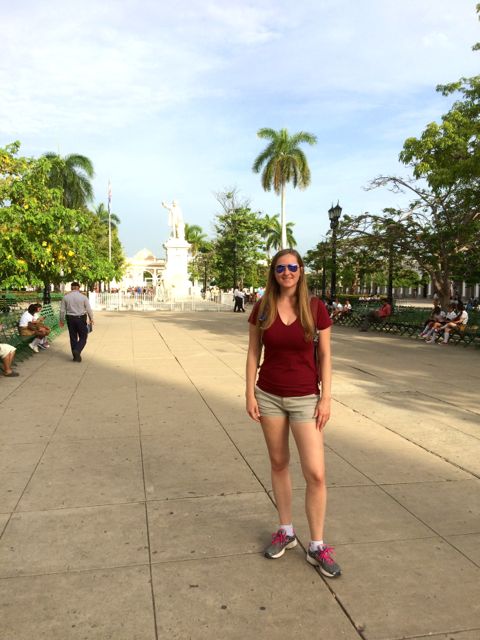 |
| I stand in the main square of Cienfuegos, surrounded by French architecture and a statue of the ever present Jose Marti. |
Cienfuegos
is located on a large bay with a narrow mouth, and thus was an especially
popular spot for pirate ships to harbor.
Pirates shaped much of Cuba’s history, and even one of the national
beers, Bucanero, is named after the feisty seagoers. This is also the beer that is thought to be
the more manly of the two, with Cristal being thought the more lady-like
cervesa, back to Cienfuegos. The first
structure of Cienfuegos was a fort (Castillo de Jagua) located at the mouth of the bay that was
built in 1742 to keep
the pesky pirates out. With effective
fortifications in place, it was only reasonable to build a city in the already
protected embayment.
 |
| A farmer's market in Cienfuegos. The building is owned by the government, but farmers can sell their fare to anyone now, to just the government anymore. The ability to seek direct to consumers have upped the standard of living of farmers as they can now make more money. |
We only had a morning in Cienfuegos
to explore the city, but it was long enough to note the French influence and
learn more about the everyday lives of Cubans.
Our tour started with a stroll around the city to see a state run
farmer’s market, bakery, and ration store.
The ration store had very little variety with shelf upon shelf of the
same exact product for extremely cheap prices.
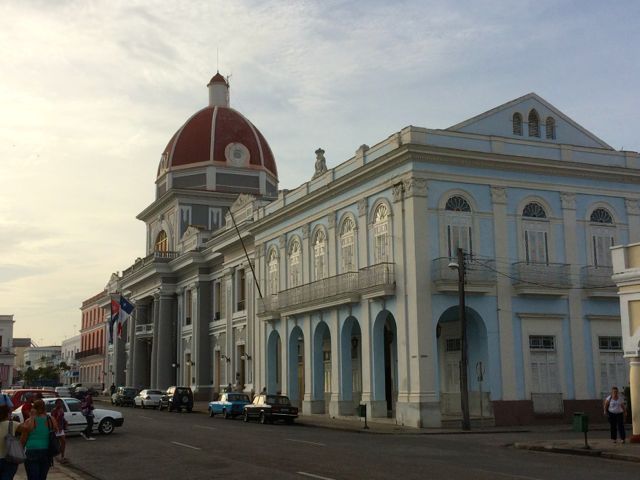 |
| This government building in Cienfuegos is classic French architecture. |
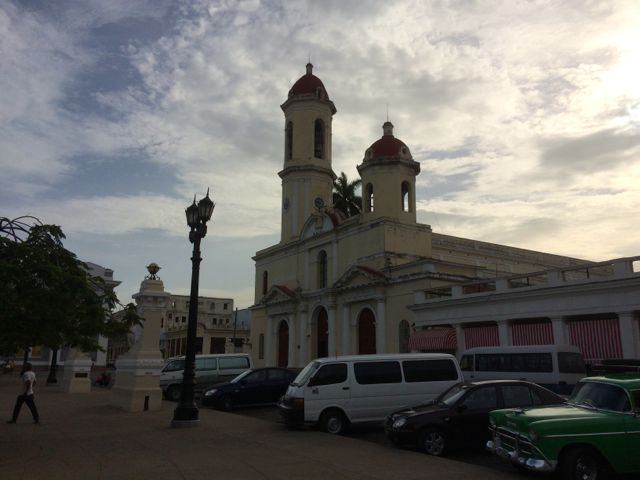 |
| Every square in Cuba needs a church, and this church was built by Chinese migrants. |
We ended our stroll at the main
square of Cienfuegos surrounded by government buildings in French architectural
domes. A local secondary school,
government offices, church, and theater all bordered the square, in the center
of which was another statue to the Cuban revolutionary hero Jose Marti. But the theater was our next destination.
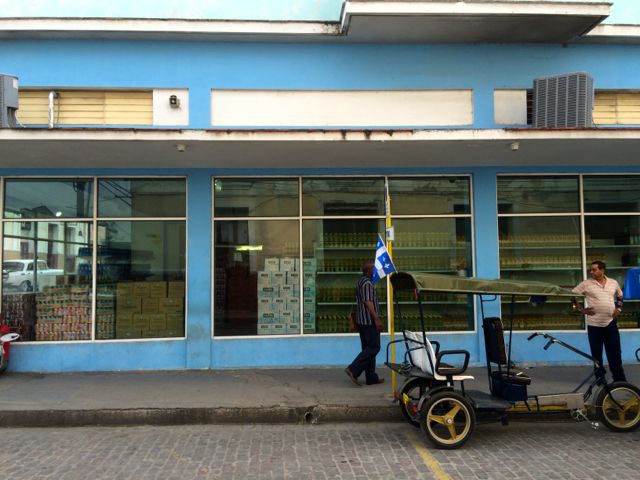 |
| A ration store in Cienfuegos. There are many shelves of the exact same item. |
The Tomas Terry Theater was built by an Italian family
in the late 1880’s, and it is still used today in its original form, including
a lack of air-conditioning and creaky narrow wooden benches. It was authentic if any building in Cuba
was. Within the theater we listened to a
professional Cuban choir that serenaded the audience with Cuban and Caribbean
popular music accapela, after which followed a short question and answer
session. Apparently the choir had travelled
to many music festivals abroad and many were music teachers at the
university.
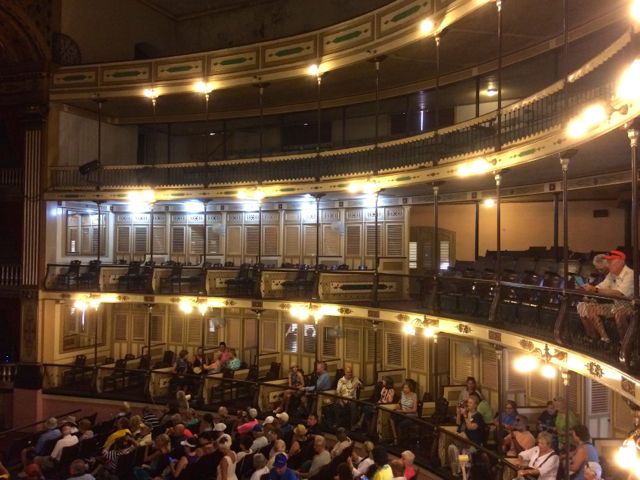 |
| Inside the authentic un-airconditiioned Tomas Terry Theater. |
We followed the performance at the
Thomas Terry Theater with a trip to the Punta Gorda neighborhood of
Cienfuegos. The Punta Gorda neighborhood
is known for its classic and massive French buildings, many of which are bed and
baths. Although the massive yacht club
still stands, now the only boats that harbor there are crew
boats. One of the more interesting
structures that caught my eye was a once casino in the Moorish style of
Alhambra in Granada.
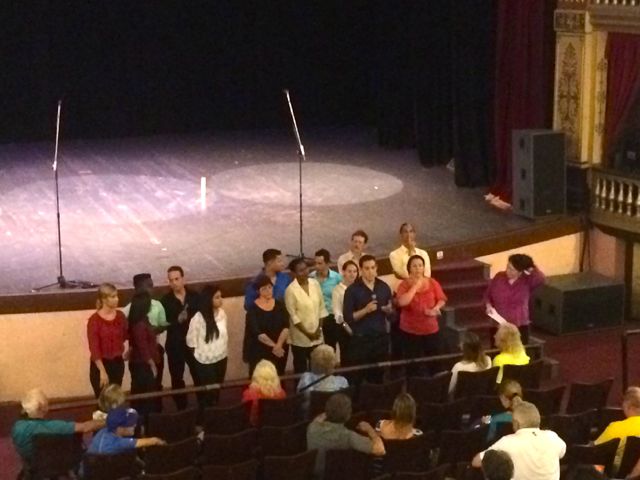 |
| This Cuban choir sang classic Cuban and Caribbean music before answering our questions. |
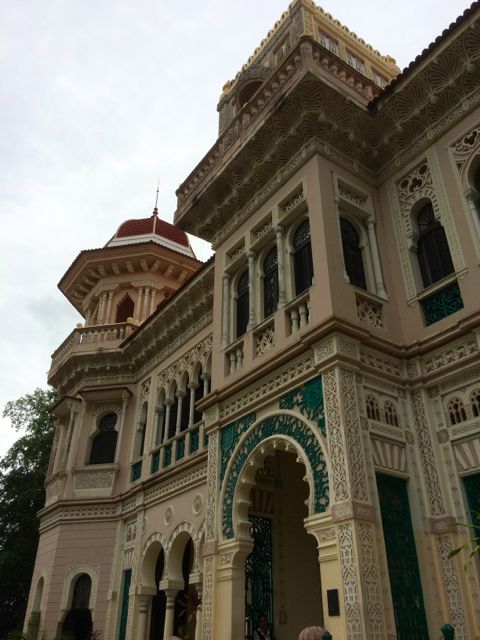 |
| This mini Alhambra was suppose to be a casino, that is before the Triumph of the Revolution. |
Punta Gorda also offers views
across the bay of the area’s Soviet history and current industry. A partially built nuclear power plant can be
seen off in the distance. It was
abandoned after the Soviet Union, who was providing the monetary and
instructional support for the plant, collapsed and the Chernobyl accident using
the same technology occurred. Now it
stands as a ruin and ever-present reminder of what could have been. If the plant had been successfully completed,
it would have provided 15% of the island’s power. As it stands, construction did not even
advance so far for nuclear materials to be needed, which never arrived.
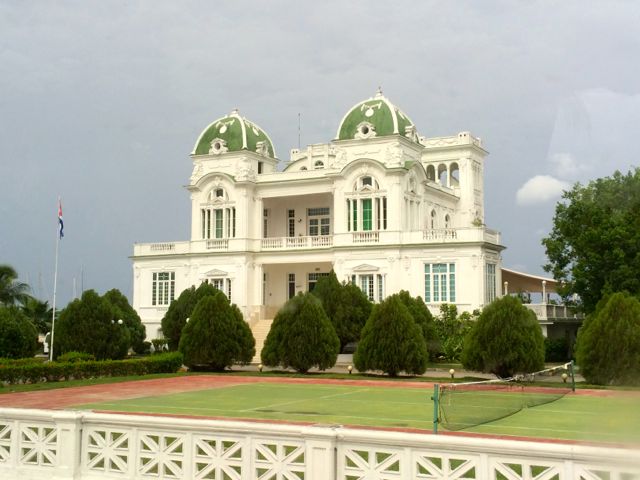 |
| The old yacht club of Cienfuegos. The only boats that go out of this club now are human powered. |
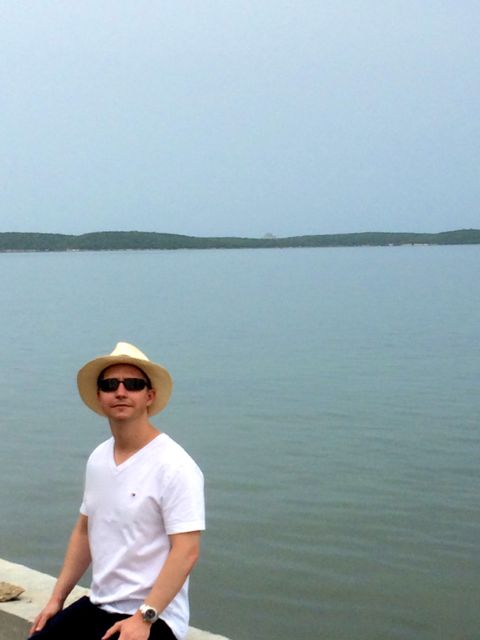 |
| David poses with the nuclear peer plant off in the distance that was never completed. |
Cuba’s response to the needed power
can also be seen across the bay in Cienfuegos, although in a different
location. An oil refinery that is the
largest single employer in Cienfuegos is apparent from smoke stacks and large
warehouse type buildings on the coast.
Cuba gets cheap oil from South American countries like Venezuela,
because it educates doctors from those countries for free and sends Cuban
doctors to those countries to render services.
As the saying goes Cuba exports three things: cigars, rum, and
doctors. The refinery pollutes the bay
to the point that it is unadvisable to swim in the water. Locals travel the beach ten miles away
outside of the bay to swim.
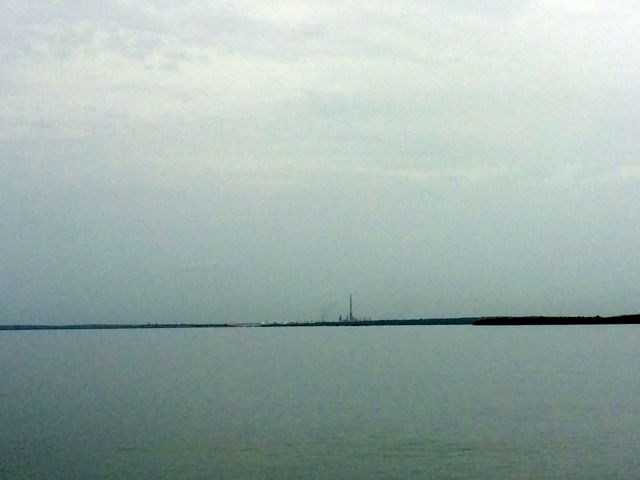 |
| This oil refinery is the main source of employment of the people of Cienfuegos. |
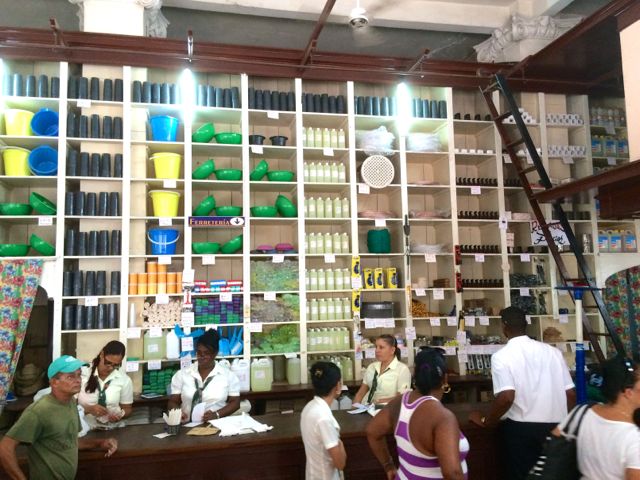 |
| Another ration store, this one sells goods instead of food. |
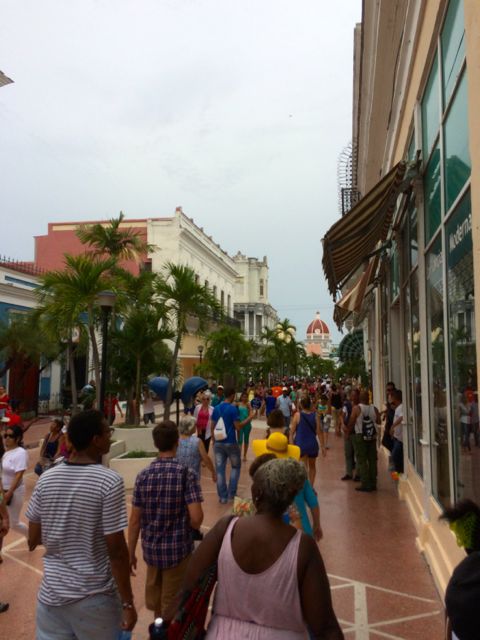 |
| The main shopping avenue of Cienfuegos is pedestrianized. Locals' and tourist shops stand side by side. |
Our last
stop on our short tour of Cienfuegos was a stroll down the pedestrianized
street, where both tourist shops and local government run goods stores can be
found. We walked into one once Sears
that now sold fabric, soap, and shirts to Cubans supplied by the
government.
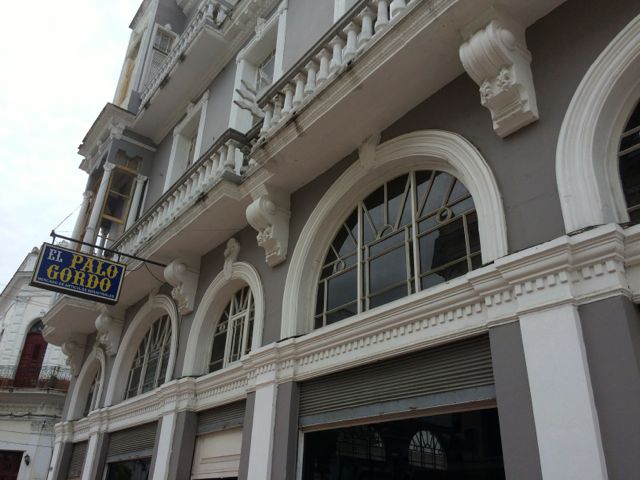 |
| This once Sears is now a ration store. |
Cienfuegos
was the smallest of the cities we visited, and probably the least
memorable.
That is not to say Cienfuegos
was not a worthy stop; it just paled in the shadow of bustling
Havana.














No comments:
Post a Comment